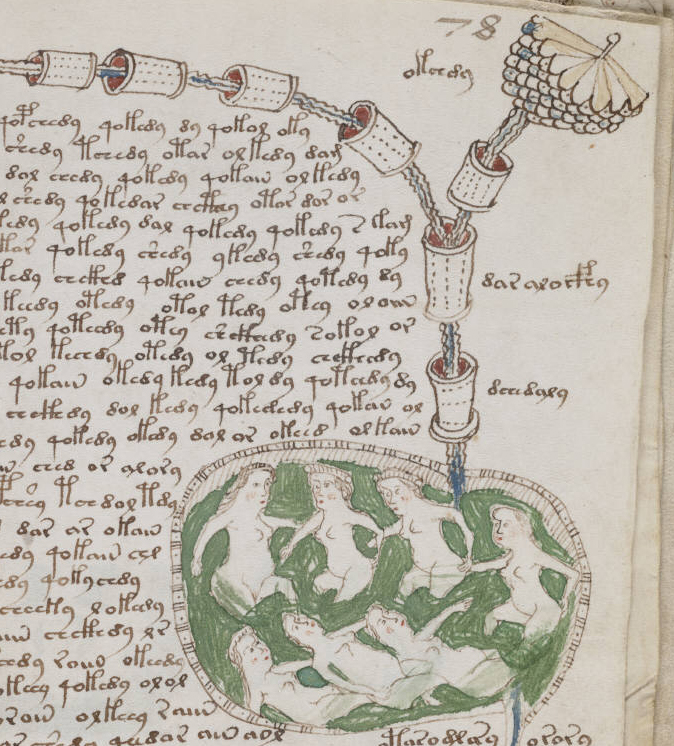 |
| Illustrations from Yale Library and Wikipeida |
In the 15th century a document called the Voynich manuscript was created (illustration at the top). The manuscript, named after a Polish-Lithuanian-American book dealer named Wilfrid M. Voynich, was acquired by him as part of a rare book purchase in 1912 in Italy.
Like STUXNET the origins of the manuscript are unknown, its purpose is unknown as is its author. Its text is thought to be encrypted with an as of yet unbreakable nature.
The Voynich manuscript is in and of itself a fascinating document. It consists of several major elements: botanical illustration of some 113 different and currently unknown plant species, astronomical and astrological drawings, a myriad of small, unusual females with swollen bellies interacting with an odd collection of tubes and liquids, an array of very large fold outs with cosmological drawings, pharmacological drawings of 100 plants in jars, many textual sections which appear to be recipes.
(If you have never seen medieval manuscripts up close I would strongly urge you to make an effort to do so. Others I have seen are remarkable in many ways: for their detail, their brilliant colors, for the shear magnitude of effort to create something so beautiful and intricate with only a quill pen, some pigments and ink, and some animal skin.)
Carbon dating, which was only completed in the last few years, indicates the document was authored between about 1404 and 1438. Like virtually all documents written at this time it was written on vellum - animal skin - which makes carbon dating very reliable.
The text itself is not written in any known language and even the glyphs themselves are unknown. There are about 200 thousand glyphs which can, for the most part, be broken down into an alphabet of 20-30 glyphs. However, the words composed of these glyphs are very unusual. For example, there are about 35,000 "words" in the manuscript and the glyphs within the words appear to follow some sort of phonological rules, i.e., some glyphs never appear with others, and so on.
Various studies of the text evaluating the frequencies of letters and words suggest that the text has something to do with medieval Latin or English. Most likely the work represents some sort of as yet unknown cypher.
There are various unusual illustrations through the manuscript.
Many involve strange images of nude, perhaps pregnant, women wading and bathing (as seen above). Many of these women appear with a variety of tubes and pipes that would appear to represent bodily organs.
There are also many images that would appear to relate to astrological or cosmological events.
Many also relate to biology and plants.
To date no one has been able to determine what this book is about nor what purpose, if any, it serves.
Some believe it to be a hoax. However, given the amount of work and cost required in the 15th century to create such a work makes me believe this is unlikely.
More than likely its what it appears to be - a collection of "knowledge" about subjects known to the authors at the time. For example, the fact that the plant illustrations do not appear to match any known species in not unusual for books written in this time period. It wasn't until later that authors actually worked to create accurate representations of natural things like plants. At the time this book was written it was not unusual for illustrations of natural things to have fanciful aspects.
Just like today people in the 15th century would appear to have reasons to create complex technological artifacts and release them without explanation into the real world.
Like STUXNET the Voynich manuscript represents a significant amount of work in creating something of a perhaps dubious purpose. And while we believe that our modern technology allows us a full and complete grasp of the world around us this particular document serves as a reminder that our hubris is not justified.




No comments:
Post a Comment